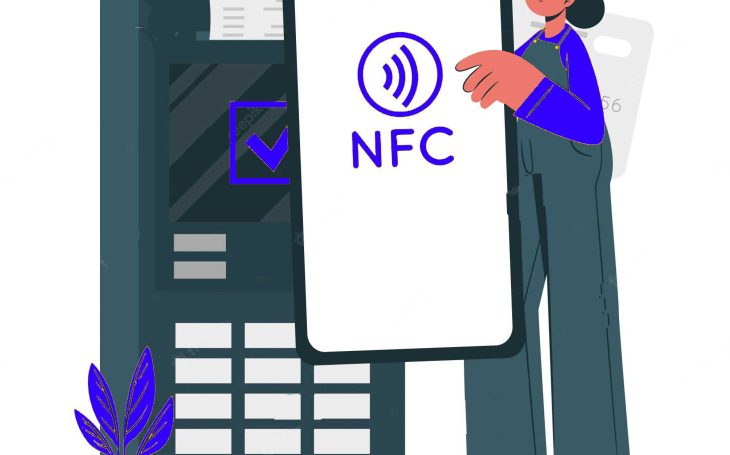
Near field communication or NFC technology was originally developed in the late 1800’s when Thomas Edison was experimenting with radio. Its roots goes back to radio-frequency identification (RFID). Itcan be defined as a short-range wireless communication technology. Near field communication began in the early 1980s and is regarded the natural evolution of radio frequency identification or RFID. This technology enables the user to send radio information to a receiver in order to be identified for tracking purposes and for security.

Charles Walton is the inventor of NFC and got the first recorded patent for an object utilizing the RFID technology in 1983. Actually, Sony and a company named NXP Semiconductors invented the new NFC technology in 2002. By 2004, huge cellular telephone companies like Nokia, Sony, and Philips had committed to the idea of integrating near field communication into their production to promote security and ease of use.
Though the NFC Forum was formed in 2004, it wasn’t until 2006 that companies produced the first set of NFC tags. They are basically tiny small objects, like a sticker, that contain information that an NFC compatible device, such as a smart phone, can exchange data when passed over. It enables user to share all sort of information from music to photos. Usually the information on the tag is read-only, but some tags enable the device reading it to write new data or even change old information. Throughout the years, more specifications surfaced and the technology grew from just payment methods to sharing videos, links, and game invites between smart phones and other NFC devices.
In 2009, P2P or Peer to peer applications were integrated within NFC technology which allowed its users to send data to other NFC enabled phones.
In 2010, Samsung manufactured the first NFC incorporated “Android” operating phone. Today, NFC dominates markets in Europe, Asia, and Japan, including the United States which is also seeing rapid growth in this field.
In September 2011, Google Wallet application that uses NFC to enable mobile payments.
So, How does itreally work?
Dissimilar to what’s shown in some commercials, a physical contact isn’t necessary to share data. Once the two devices are connected, they transfer data over the 13.56 MHz radio spectrum. One device uses magnetic induction to establish a radio-wave field that can be detected and accessed, permitting small amounts of data to be transported wirelessly over a typically short distance (the distance must be less than 4 inches). It supports encryption, simply due to the fact that the devices must come so close together in order to communicate which precludes hacking.
If that sounds a lot like RFID, it’s probably because NFC is pretty much an evolved form of RFID. In comparison to other wireless technologies like Wi-Fi or Bluetooth, it is by far much slower, with a maximum data transfer speed of 0.424 Mbps. NFC consumes 15 mA of power (which is negligible for today’s Smartphone batteries), it also ensures greater security and it is completely effortless, requiring nothing but a single tap. NFC is being used in transit passes, library cards, keycards, etc. It’s really crazy!! By simply tapping your phone onto a tag of a certain device you receive its warranty information, or a pack of cigarettes to get some horrific government-sponsored images of smokers’ lungs. Creepy, eh?
What about Infrastructure? Since it is the result of the natural evolution of RFID, it is thus compatible with the current available RFID terminals; no new hardware will be introduced to make it function.
NFC expectations are soaring high up in the sky. With so much on the stake, service providers should live up to the customers’ expectations. To infinity and beyond!! The technology’s future is in the palm of the producers’ imagination. It is expected that within the few years to come, all smart phones will integrate an this technology enabling a much simpler and easier life.



